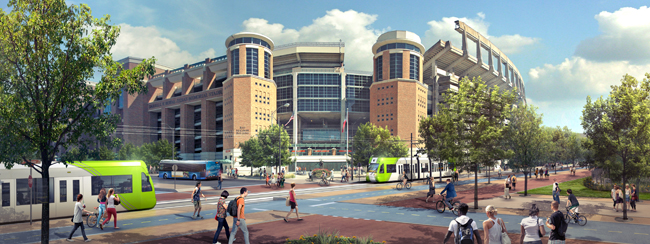Expensive on-campus and West Campus housing pushes students struggling with the rising costs of college to look farther off for affordable living. Many of these include African-American students, who make up a meager 5 percent of the student population, and an increasing number of Hispanic students. While our campus encourages diversity, the lack of support for transportation options that would ultimately increase minority affordability seems to contradict this priority. The city should work to make transportation equal for all areas to ensure affordability and accessibility of Austin, with Proposition 1, the local urban rail proposal, being the first step of many that need to be taken.
For those without the option of a car, public transportation is often the only means of transit. Historically, infrastructure segregated white and black Austin between the west and east, respectively, but modern development and rising costs are pushing minorities even further east. In communities that don’t have an East to West connection, limited transportation options inhibit commutes to work outside of their community, distant schools and even suitable grocery stores, as many eastern neighborhoods are food deserts with only convenience stores as sustenance options. The lack of adequate public transportation options isolate poorer communities, further distancing them from interaction and representation on a municipal level.
Congestion is usually given as the main concern when defending public transportation. Capital Metro buses assist many as an alternative to car trips that cost the average Austinite 40 additional hours per year in traffic. But this emphasis evades the importance of accessibility. Discontinued bus routes have hurt students in particular. Specifically, the disappearance of the Wickersham and Cameron Road shuttles hurt students looking to lease in an affordable area but rely on the bus as their only way to school. The current urban rail proposal would be especially beneficial for the many students residing at the Riverside student apartments, which are significantly less expensive than their closer West Campus counterparts.
City transportation discussions often revolve around public transportation as a means to address traffic issues and rapid growth, but rarely is equal accessibility even mentioned, much less made a priority. The new District 1 Council member will no doubt give a voice to these communities and bring accessibility to the forefront of the Austin equality conversation, but a “yes” to Proposition 1 would be a step in the right direction to expand public transportation and begin a pattern of prioritizing accessibility for traditionally overlooked and underserved communities. The city needs to be made accessible in all directions, not leaving low-income neighborhoods out of options.
Griffin is a journalism freshman from Houston.





















